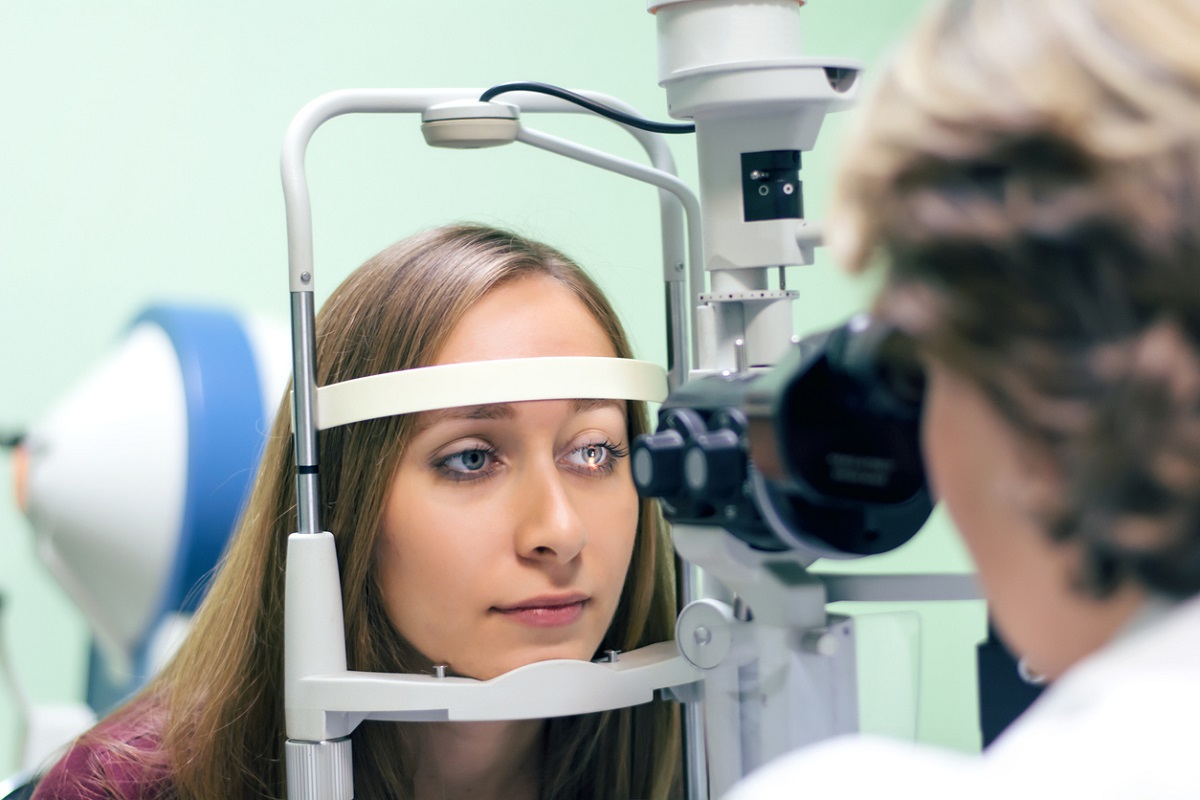WHO’s first guidelines to improve care for women with sickle cell disease
Current clinical guidelines for managing SCD in pregnancy have been largely based on protocols from high-income countries, the WHO noted.
Glaucoma is a group of conditions where a rise in the pressure inside the eye (Intra-ocular pressure) causes a gradual destruction of the nerves that connect the eye to the brain (Optic nerve head), resulting in sight loss.
SNS | New Delhi | March 7, 2021 4:17 pm

Diabetic retinopathy usually affects people who have had diabetes for a long time. (Representational Image: iStock)
Glaucoma is often called ‘the silent thief of sight’ because it has no symptoms in early stages and can slowly and painlessly cause permanent loss of vision before the patient is aware. An estimated 76 million people globally have glaucoma and approximately 4.5 million people are blind because of the condition. And these numbers are on the rise and it is estimated that almost 95 million people will be affected with it by 2030 (WHO world report on vision 2019).
What is Glaucoma?
Advertisement
Glaucoma is a group of conditions where a rise in the pressure inside the eye (Intra-ocular pressure) causes a gradual destruction of the nerves that connect the eye to the brain (Optic nerve head), resulting in sight loss. Although it’s not clear exactly why this happens, factors such as age, family history, racial background and other medical conditions such as diabetes and short-sightedness can increase the risk. It can affect people of all ages, but it’s most common in adults over the age of 40 years.
Advertisement
The condition can be difficult to diagnose because symptoms don’t appear straight away – instead, they develop slowly over many years. This means many patients only seek treatment when they notice they’re losing their sight, when significant damage has already occurred.
There are different types of glaucoma, and treatment will depend on the type a patient has. Glaucoma can’t be cured, and vision that has already been lost cannot be restored. But further sight loss can be prevented via medication or surgery. Each glaucoma patient requires lifelong management for best results.
Who is at risk for Glaucoma?
Any one can have Glaucoma and the risk increases with increasing age. People with a family history of Glaucoma, those with high minus glasses (or used to but have got spectacle removal surgery done) or those with a history of an eye injury are at higher risk for developing the disease. Some other factors like high or low blood pressure and long-term use of steroid eye drops are also risk factors.
How to get screened?
In the initial stages of Glaucoma, there may be absolutely no eye complaints. Some people may have non-specific symptoms like headache, watering or seeing a coloured halo but these may or may not be present.
If you are above 40 years of age you must visit your nearest eye health facility and ask for a Glaucoma screening, irrespective of whether you have any eye symptoms or not. The screening consists of checking the Intra ocular pressure (IOP, pressure inside the eye), assessing the health of the optic nerve (imaging of the back of the eye) and assessing the extent of the area of vision that one can see (Visual field testing).
How is Glaucoma treated?
Depending upon the type and stage of the disease, treatment of Glaucoma may include eye drops, laser therapy or eye surgery. Due to the chronic nature of the disease, it needs life long follow up and monitoring.
All modes of treatment for Glaucoma and essentially aimed at preventing further damage to the optic nerve and cannot reverse the damage already done!
Regular annual comprehensive eye examination is the only way to detect Glaucoma in the early stages before any significant visual loss has occurred.
Eyedrops: The most common type of glaucoma is usually treated with eye drops that reduce the pressure in the eye. This treatment will need to be continued throughout the person’s life.
Surgery: Laser treatment or surgery can correct the problem that initially caused the fluid build-up. Laser treatment is straightforward and usually takes about 15 minutes.
Can diabetes increase your risk of Glaucoma?
Diabetic retinopathy, which is a complication of diabetes and the most common form of diabetic eye disease, can increase your risk of glaucoma.
Diabetic retinopathy usually affects people who have had diabetes for a long time. The risk of this condition increases withage, unmanaged blood sugar levels and high blood pressure
With diabetic retinopathy, changes in your glucose levels can cause the blood vessels in your retina to weaken and become damaged. This can eventually lead to glaucoma. Some research studies suggest that People with diabetes are twice as likely to develop glaucoma as are non-diabetics.
How can Glaucoma be prevented?
These self-care steps can help you detect glaucoma in its early stages, which is important in preventing vision loss or slowing its progress.
(Author: Dr Sandeep Buttan, Global technical lead- eye health ASIA at Sightsavers)
Advertisement
Current clinical guidelines for managing SCD in pregnancy have been largely based on protocols from high-income countries, the WHO noted.
On May 22, the world celebrated the International Day for Biological Diversity, at a time when the disappearance of species is at the highest rate in human history.
Prime Minister Narendra Modi, in his address to the nation on Mann Ki Baat, stated that an MoU was signed in the presence of WHO Director General and his “friend Tulsi Bhai” (Dr Tedros Adhanom Ghebreyesus).
Advertisement
